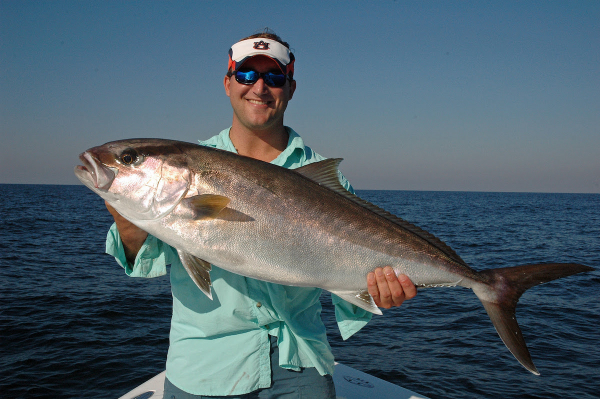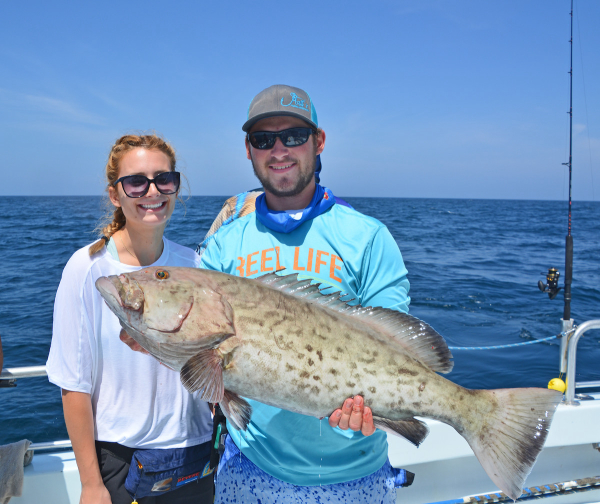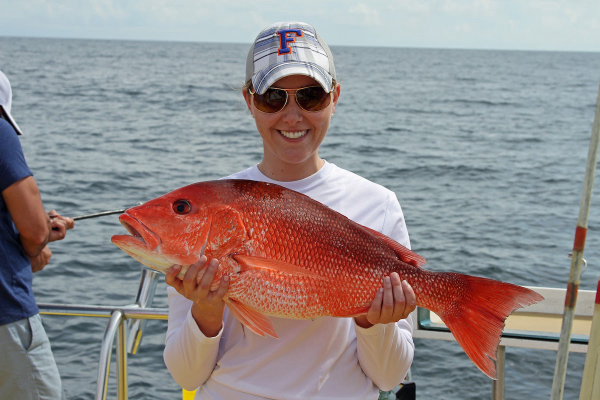The proverbial dookie has hit the proverbial fan after NOAA Fisheries last week admitted that their recreational fishing harvest estimate program may be overestimating recreational catch and effort data by a substantial 30 to 40%.
This is a big deal because the federal agency uses this information to decide how many fish recreational anglers—us—can harvest in federal waters, more than three nautical miles into the Atlantic, nine nautical miles into the Gulf of Mexico.
If the estimates are too high, it means that seasons, size limits and bag limits are needlessly going to get more stringent on striped bass, red snapper, amberjack and other highly sought species. The two-day red snapper seasons of a few years back were a prime example of federal regulations that have resulted from over-estimating the catch previously.

Amberjack are a favorite midwater species now undergoing tighter management due to overharvest in some areas off the southeast coasts. (Florida FWC)
While sportfishers in general don’t want to take so many fish that the resource suffers, most of us do like to take home a catch that will feed the family and add to the enjoyment of our favorite recreation.
NOAA’s heart is in the right place—nobody wants depleted coastal fisheries—but sometimes you get the feeling they view anglers as unnecessary evils to their fish management plans. And, to be sure, managing deep-water species like snapper and grouper presents special problems because many fish that are caught wind up dead when released. The “discard mortality” can be greater than the legal catch.
That said, the Congressional Sportsman’s Foundation (CSP), which keeps an eye on the doings in Washington for anglers and hunters, is taking a dim view of the latest faux pas, echoed by other sportfishing groups.
“NOAA's recent pilot study findings underscore the urgency of addressing the accuracy and reliability of MRIP-FES data. Several states have already demonstrated their capability to develop survey programs that provide more precise recreational catch and effort data than MRIP. To navigate this critical juncture, it is imperative for NOAA to collaborate closely with all states, identifying optimal strategies for transitioning some or all of the recreational data collection responsibilities to the states. Moreover, NOAA should explore avenues to support states, including funding, to enhance their data collection capabilities.

Gag grouper are also tightly managed in both state and federal waters of the southeast. Numbers of the largest fish are down in some areas, researchers say. (FWC)
“NOAA must engage in collaborative efforts with states and stakeholders to implement necessary reforms in recreational data collection. These reforms have been identified in a recent National Academy of Sciences report. In tandem with these efforts, NOAA should make substantial investments in the development and implementation of recreational management improvements,” CSF said in a Monday statement.
Jeff Angers, President of the Center for Sportfishing Policy, emphasized the urgency of the situation, stating, "NOAA has had multiple chances to fix management of recreational fisheries, and it has failed every time. A ready alternative exists in states that have already taken steps to develop better recreational data. It’s time for all parties to work together to properly fund state efforts to manage recreational fisheries."
Mike Leonard, Vice President of Government Affairs for the American Sportfishing Association, voiced concerns about the confidence of the recreational fishing community in federal fisheries data, saying, "Achieving fisheries management that balances conservation and access, and that anglers can trust, requires fundamental changes to how these data are collected."
Ted Venker, Conservation Director of Coastal Conservation Association, also expressed doubts about NOAA's capability, saying, "At best we are looking at several more years of questionable revisions, recalculations, and recalibrations based on a suspect data system that has never proven it can produce accurate information. This is no way to manage a public resource."

Red snapper seem to be large and abundant in much of the Gulf of Mexico, but seasons and bag limits are still very tight. (Alabama DCNR)
Chris Horton, Senior Director of Fisheries Policy for the Congressional Sportsmen’s Foundation, echoed these concerns: "It becomes more obvious that the increasingly ineffective federal model of managing to a theoretical annual quota based largely on old catch data is truly the elephant in the room."
Bottom line is that NOAA Fisheries needs to coordinate much more closely with state fishery managers and probably to incorporate many of the advances in fish harvest data developed by the states to come up with more accurate assessments of our fish stocks, which will hopefully lead to more reasonable and equitable management of fish in federal waters.
— Frank Sargeant
Frankmako1@gmail.com